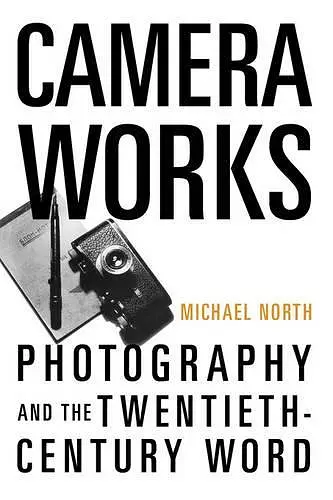Camera Works
Photography and the Twentieth-Century Word
Format:Paperback
Publisher:Oxford University Press Inc
Published:1st May '08
Currently unavailable, and unfortunately no date known when it will be back

Camera Works is about the impact of photography and film on modern art and literature. For many artists and writers, these new media offered hope of new means of representation, neither linguistic nor pictorial, but hovering in a kind of utopian space between. At the same time, the new media introduced a dramatic element of novelty into the age-old evidence of the senses. For the avant-garde, the challenges of the new media were the modern in its most concentrated form, but even for aesthetically unadventurous writers they constituted an element of modern experience that could hardly be ignored. Camera Works thus traces some of the more utopian projects of transatlantic avant-garde, including the Readie machine of Bob Brown, which was to turn stories and poems into strips of linguistic film. The influence of photography and film on the avant-garde is traced from the early days of Camera Work, through the enthusiasm of Eugene Jolas and the contributors to his magazine transition, to the crisis created by the introduction of sound in the late 1920's. Subseguent chapters describe the entirely new kind of sensory enjoyment brought into modern American fiction by the new media. What Fitzgerald calls "spectroscopic gayety," the enjoyable diorientation of the senses by machine perception, turns out to be a powerful force in much American fiction. The revolutionary possibilities of this new spectatorship and its limitations are pursued through a number of examples, including Dos Passos, James Weldon Johnson, and Hemingway. Together, these chapters offer a new and substantially different account of the relationship between modern American literature and the mediatized society of the early twentieth century. With a comprehensive introduction and detailed particular readings, Camera Works substantiates a new understanding of the formal and historical bases of modernism. It argues that when modern literature and art respond to modernity, on a formal level, they are responding to the intervention of technology in the transmission of meaning, an intervention that unsettles all the terms in the essential relationship of human consciousness to the world of phenomena.
"Photography, Michael North argues in this exciting and profoundly original study, has for too long been understood as just another medium, with its particular possibilities and conventions--a medium, moreover, that provides for 'realistic' representation. But understood properly in its mode and function, photography emerges as itself a kind of modern writing, its inherent mediation itself determining how we view the world in words. In a series of provocative and groundbreaking chapters, ranging from Stieglitz's Camera Works and the Readies of Bob Brown to the novels of Fitzgerald, Dos Passos, and Hemingway, North shows that recorded mediation, in its aesthetic, social, and cultural effects, is at the very core of the literature we call Modernist."--Marjorie Perloff, Stanford University
"Camera Works offers vivid new takes on literary Modernism, showing how the evolving technologies of photography and film exerted a profound and often problematic influence on the writings of the period. North's readings of even the most familiar modernist texts offer a range of excitingly unfamiliar perspectives."--Peter Nicholls, University of Sussex
- Winner of Winner of the 2006 Modernist Studies Association Book Prize.
ISBN: 9780195332933
Dimensions: 234mm x 156mm x 15mm
Weight: 386g
272 pages